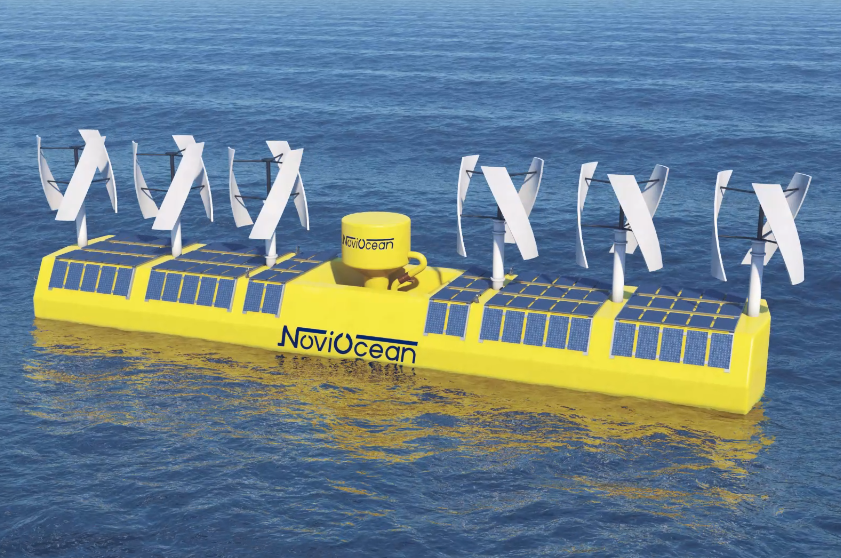
1 MW Hybrid Wave, Wind & Solar Energy Converter, designed and validated for solving energy intermittency with off-phased 24/7 stable energy delivery
The long-awaited solution in Ocean Energy with unprecedented performance numbers
- Producing – 30 MWh/Ton – 3 – 40x more than competition
- Ability to Produce Power in 90% of Sea Conditions
- 24/7 Energy Output, Bridging the Intermittency (40 – 70% Capacity Factor)



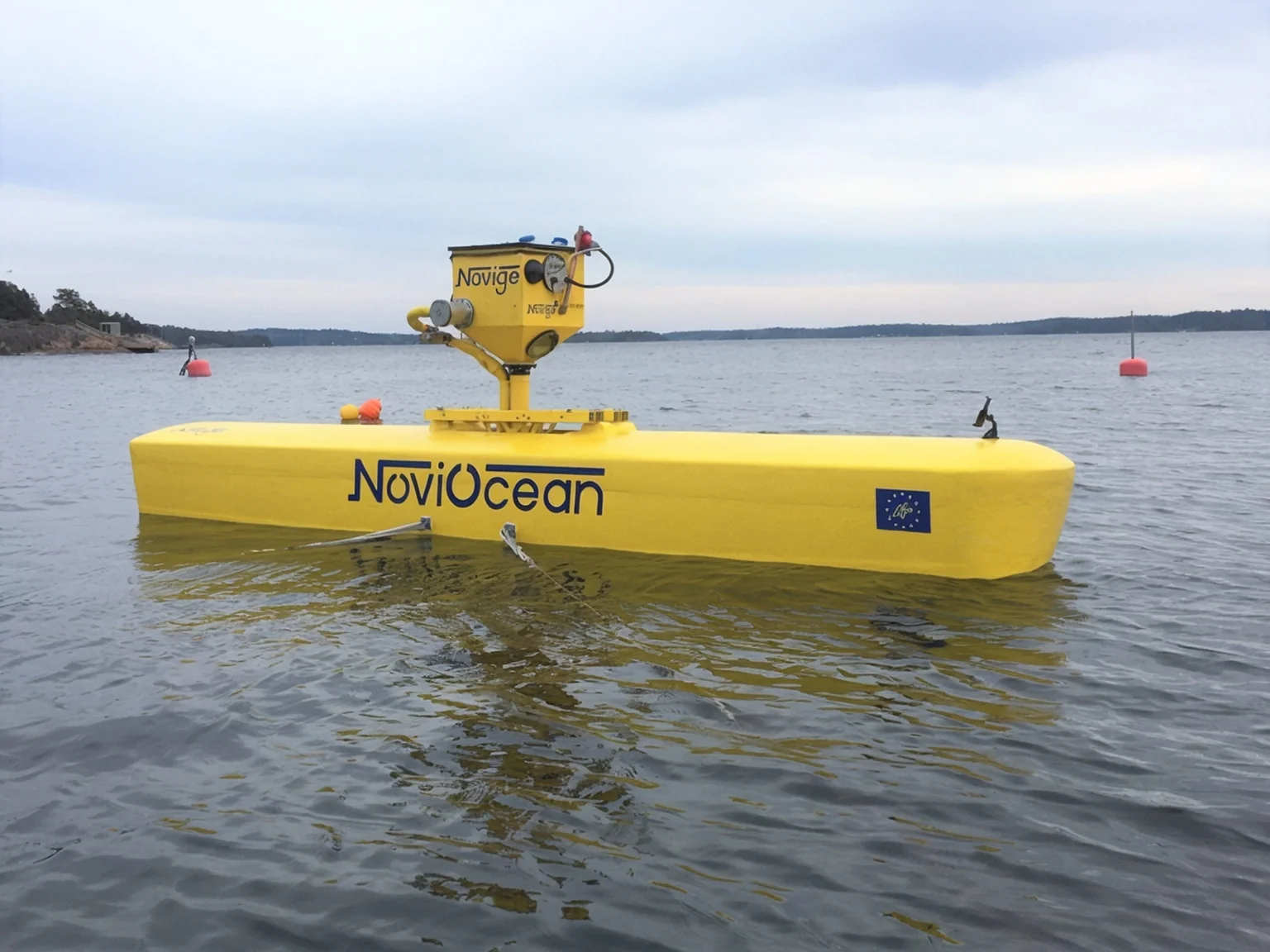
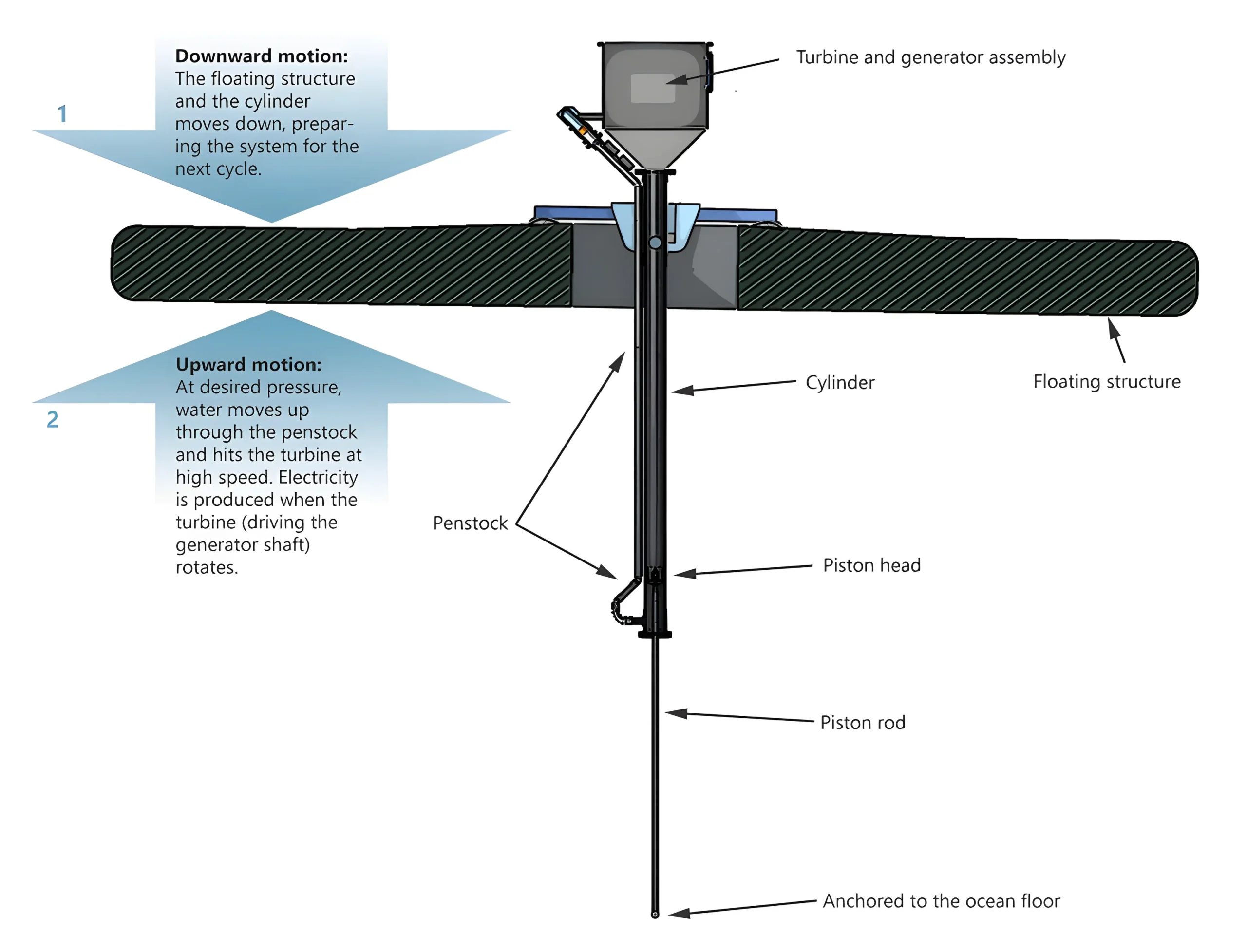
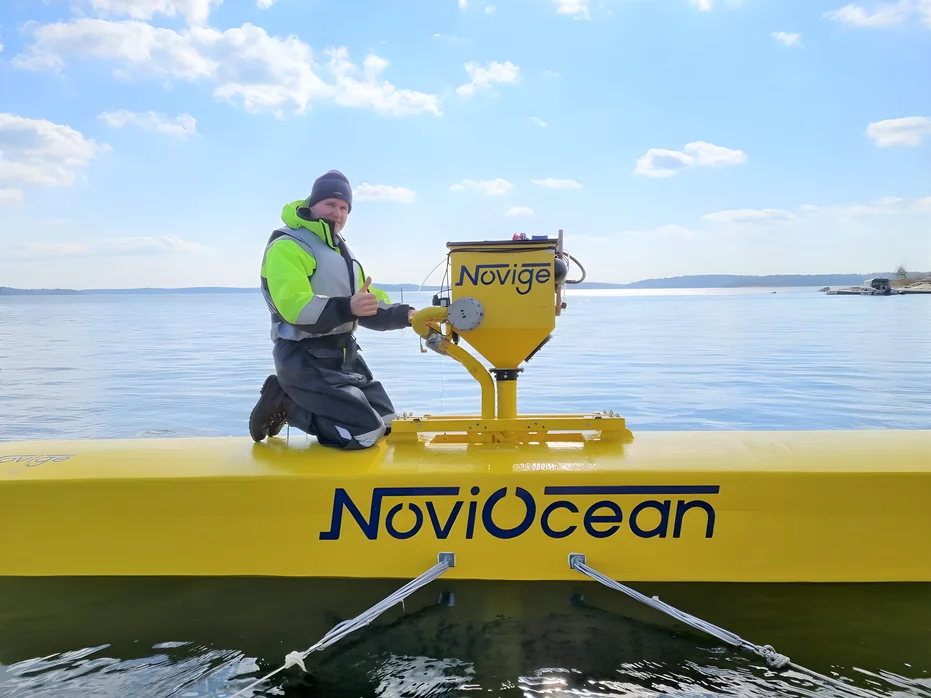
Pic simulation 1: Maximum draft and drag forces in lifting mode.
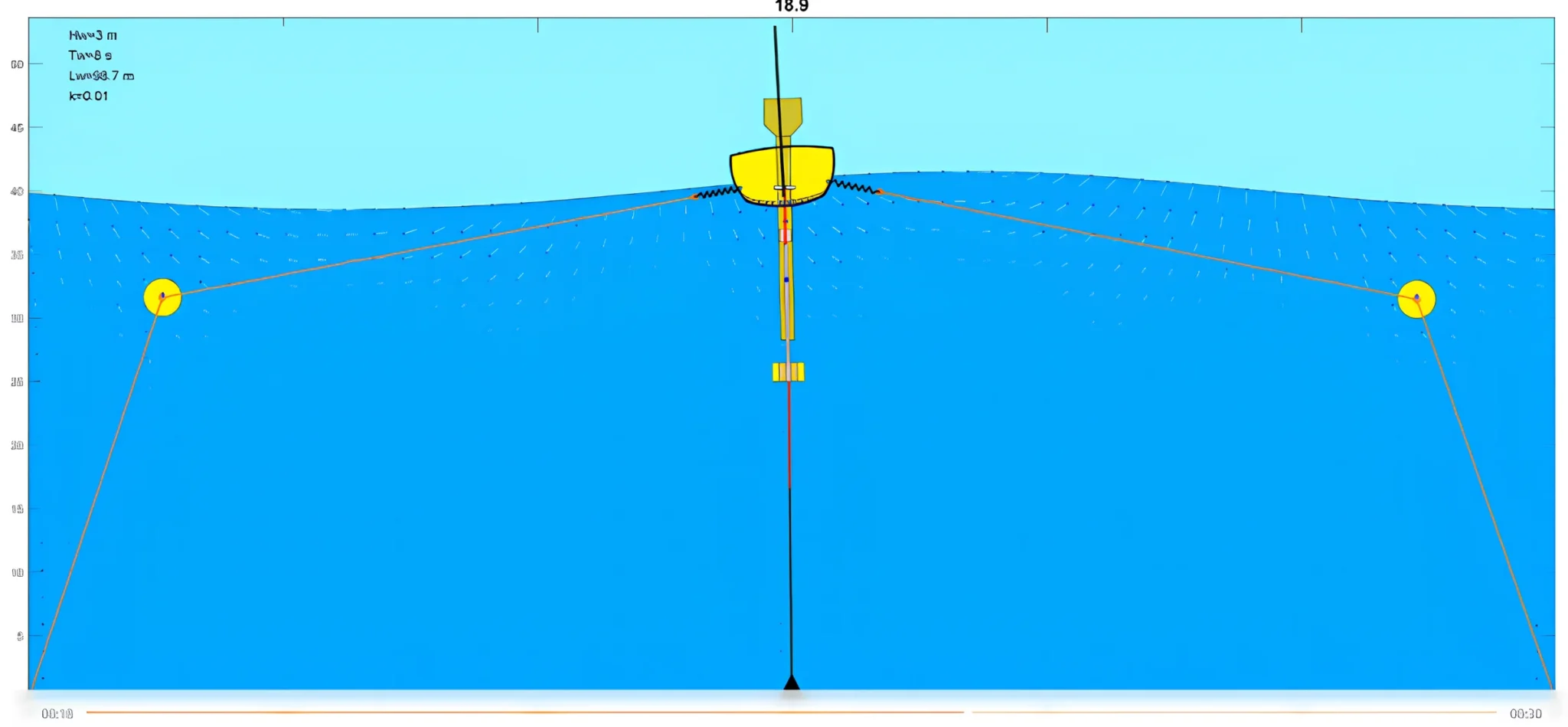
Pic simulation 2: Minimum draft when free floating in the descending phase, or initiated “survival mode”
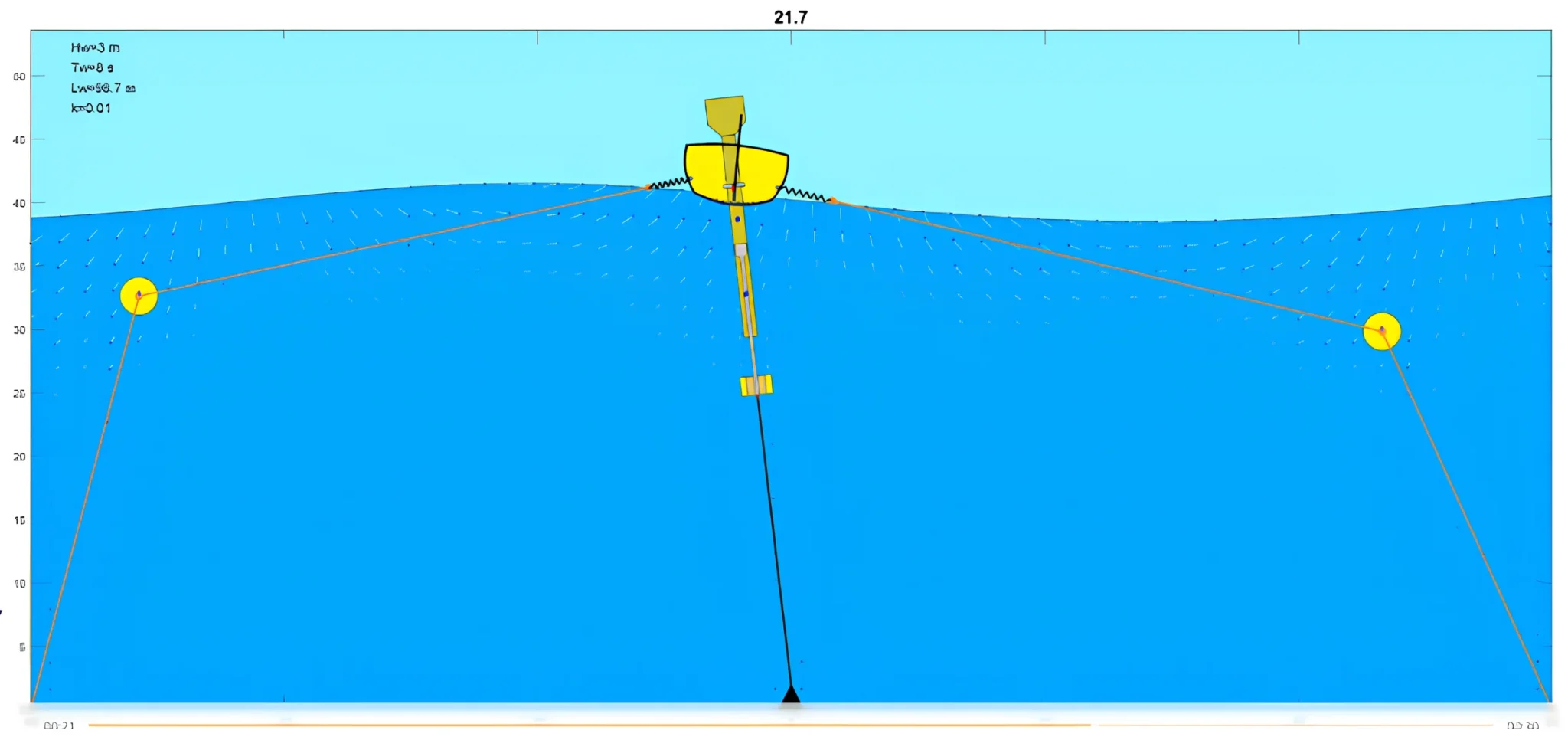
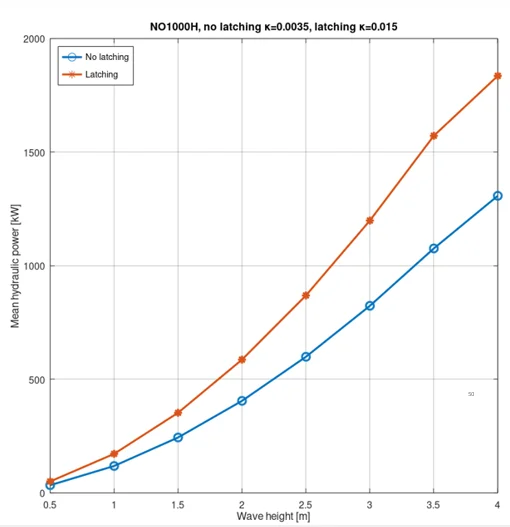




- 1 MW Hybrid Offshore Energy Converter
- Well Proven Components with High Conversion Rate
- Simple & Light Weighted Design
is 600 tons in four-meter waves for a float net area of 260 sq. meters (38 x 8 m)
need about 30x larger area to create a similar force. This equals about 8 000 sq. m or 800 x 10 meters, which will be far too heavy and costly
high amounts of energy per ton of material in the ocean, buoyant concepts are in our opinion the only realistic solution. The others are simply way too costly vs output
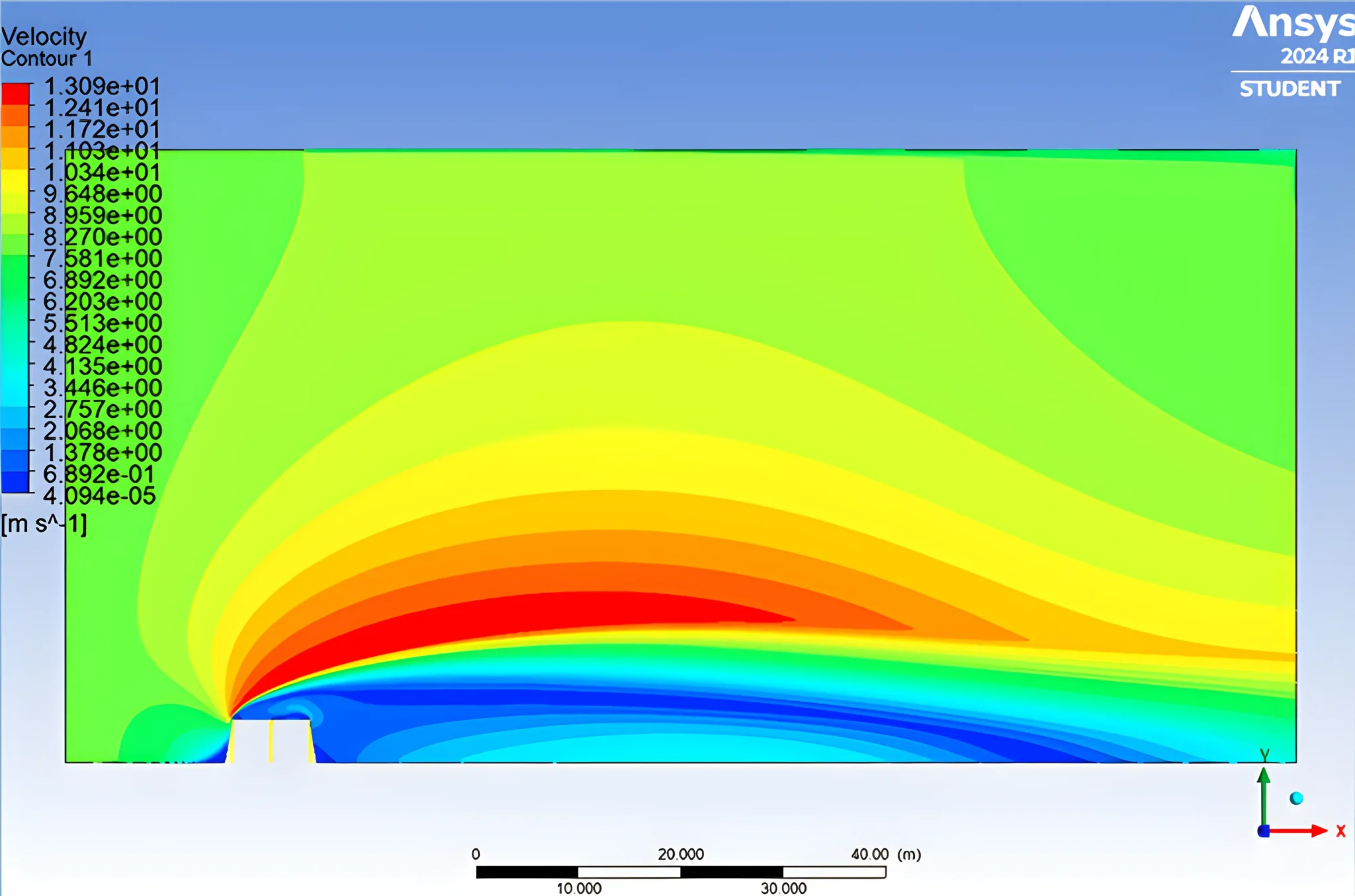
6 m/s = 15% to 8 m/s = 40%
7 m/s = 25% to 10 m/s = 75%
8 m/s = 40% to 11 m/s = 85%
9 m/s = 55% to 12 m/s = 95%
10 m/s = 75% to 13 m/s = 100%
11 m/s = 85% to 14 m/s = 100%
12 m/s = 95% to 15 m/s = 100%
13 m/s 100% to 17 m/s =100%
6 m/s = 15%
7 m/s = 25%
8 m/s = 40%
9 m/s = 55%
10 m/s = 75%
11 m/s = 85%
12 m/s = 95%
13 m/s = 100%
Li-ion storage, H2 production, desalination
with few, light, simple and well-proven components
“Hydropower Plant at Sea” 38-meters long 150 tons
delivery, less need for fossils and storage
F.A.Q.
NoviOcean’s innovative Hybrid Energy Converter (NHEC) harnesses the combined power of wave, wind, and solar energy. This groundbreaking technology delivers efficient and cost-effective renewable energy, paving the way for a sustainable future.
NoviOcean HEC delivers double the power output per sea area compared to wind power. Its hybrid design (wave, wind, solar) and efficient use of infrastructure lead to a lower Levelized Cost of Energy (LCOE) in early evolution.
Noviocean HEC is easy to produce, install, and maintain due to its modular design and well-proven parts. It boasts a low environmental footprint and superior power-to-weight ratio compared to offshore wind.
NoviOcean offers competitive development costs, with LCOE reaching €100/MWh after only 100 units deployed, then lower. Investment benefits include attractive incentive programs, expected high profits, participation in a meaningful and scaleable clean energy solution, and not the least, extremely positive marketing effects for partners and users.
NoviOcean is in Stage 4 (TRL 7), developing a 1:1 scale pilot to demonstrate real-world performance and pave the way for commercial deployment.
NoviOcean aims to deliver stable ocean energy at a lower cost than offshore wind and secure 0.5 GW of contracted capacity by 2030.
NoviOcean envisions having 10 GW deployed by 2050, capturing 25% of the EU's 2050 target and generating €30 billion in sales within Europe alone. The global market potential is three times larger.

